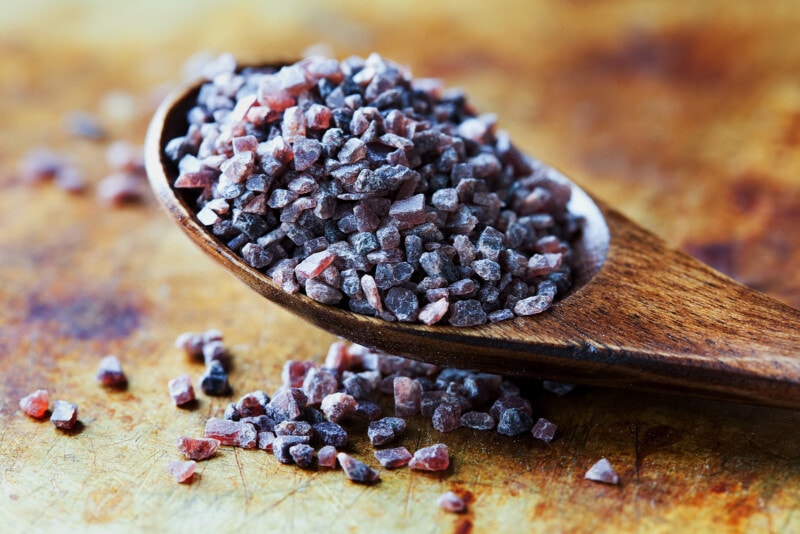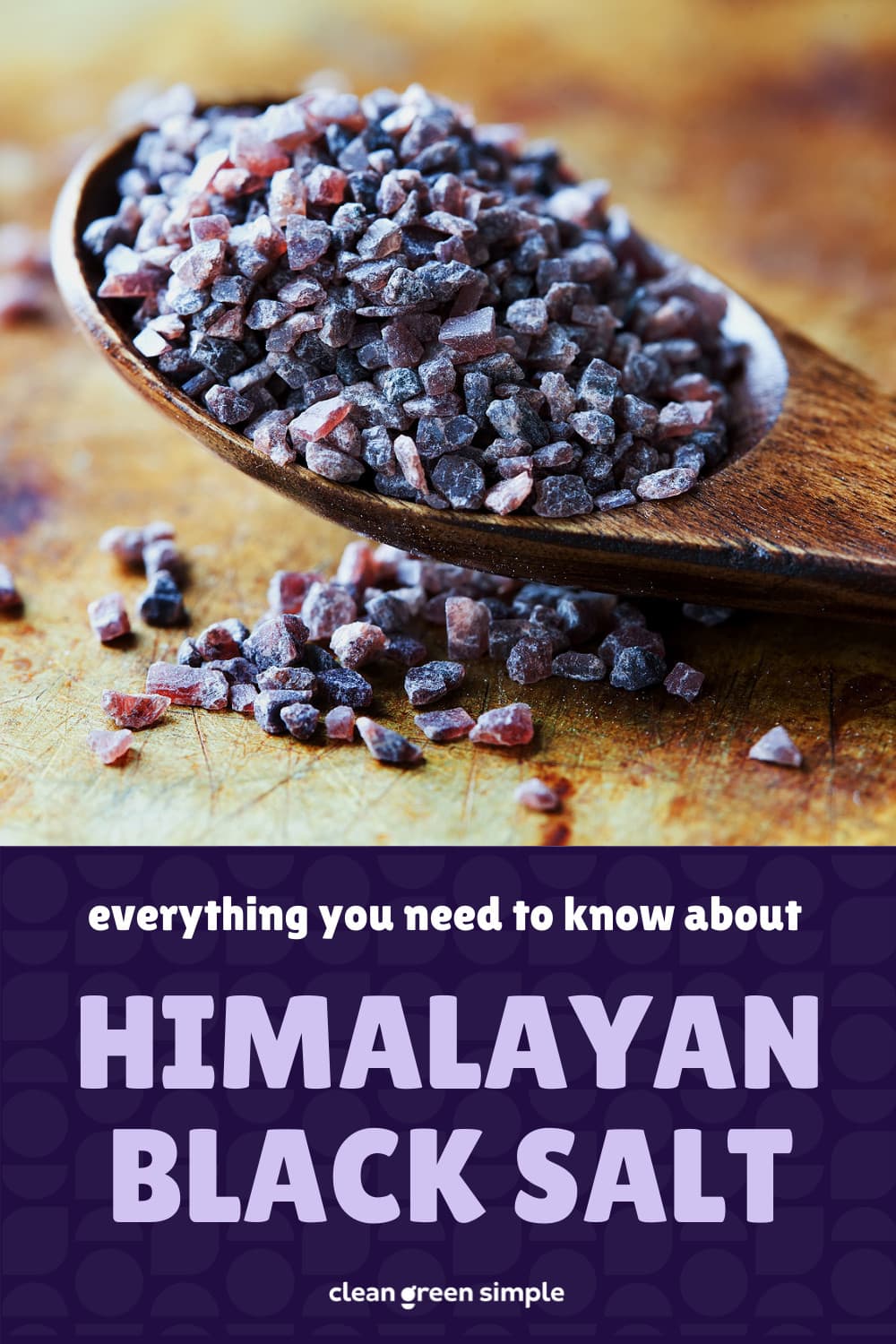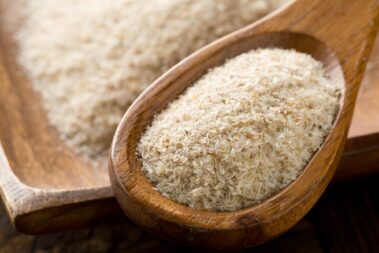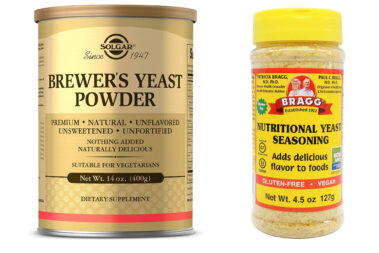If you’ve come across this funky-smelling purplish salt for the first time, then you probably have a few questions, starting with, what is Himalayan black salt and how the heck do you use it?
Keep reading to find out everything you need to know about the newest (but really very ancient) member of the salt family. We’ll look at how Himalayan black salt might benefit your health and how to tell natural black salt from synthetic versions cooked in a lab.
Table of Contents
What Is Himalayan Black Salt?
Himalaya black salt is a type of halite, or rock salt, that is obtained from mines at the base of the Himalayas in India and Pakistan. In its raw form, this halite is pink and tastes very similar to normal table salt.
To get the unique taste this kind of salt is famous for—a deep umami, almost rotten-egg flavor—the salt is cooked in a kiln with spices and charcoal. The exposure to high heat and charcoal causes some of the sodium chloride in the salt to undergo a chemical reaction to form sodium sulfide and hydrogen sulfide.
The amount of these sulfides in the final product is not enough to negatively affect your health but is enough to add a noticeable flavor and smell to the product.
This final product comes in a variety of colors from black to purple to deep pink. In India, Himalayan black salt is called kala namak and is sometimes sold under this name in America.
Health Benefits
There’s little research on health benefits specific to Himalayan black salt. However, according to Registered Dietician, Lauren Panoff, MPH, RD, it generally undergoes less processing than table salt, and therefore may contain fewer additives, like aluminum silicate and anti-caking agents.
A 2020 study found that Himalayan black salt contained less sodium than common salt, which may be attractive for people wanting to minimize sodium intake (1). The authors of that study also found that black salt had high antioxidant activity and contained minerals like iron, calcium, and magnesium that can support overall health.
Black salt was first used in Ayurvedic medicine due to its supposed therapeutic qualities. Ayurvedic medicine is a system of traditional medicine native to India, which uses a range of treatments, including panchakarma, yoga, massage, acupuncture and herbal medicine, to encourage health and wellbeing.
Possible Side Effects
Hydrogen sulfide is best known in its gaseous form, which is immediately deadly at high exposures. Luckily, the amount of hydrogen sulfide found in Himalayan black salt is negligible. It is enough to give it just a touch of that rotten egg smell, but not enough to cause any health problems.
Panoff advises, however, that Himalayan black salt doesn’t contain iodine, an essential nutrient for thyroid function that is widely added to table salt. As such, it’s important not to rely on black salt for iodine, and make sure you’re including other iodine sources in your diet.
Additionally, a 2017 study on adolescent children in India found that a higher intake of black salt was one factor in their development of dental fluorosis, or enamel changes from excess fluoride intake (2).
Of course, like all salt products, there are negative side effects to eating black salt if you do so in excess. The Dietary Guidelines for Americans recommends a maximum of 2,300 mg sodium per day for most healthy adults (3).
Increased sodium levels over time can lead to hypertension and high blood pressure. So, while black salt is better for your overall health than table salt, it also needs to be consumed with some restraint.
Himalayan Black Salt Vs. Pink Salt
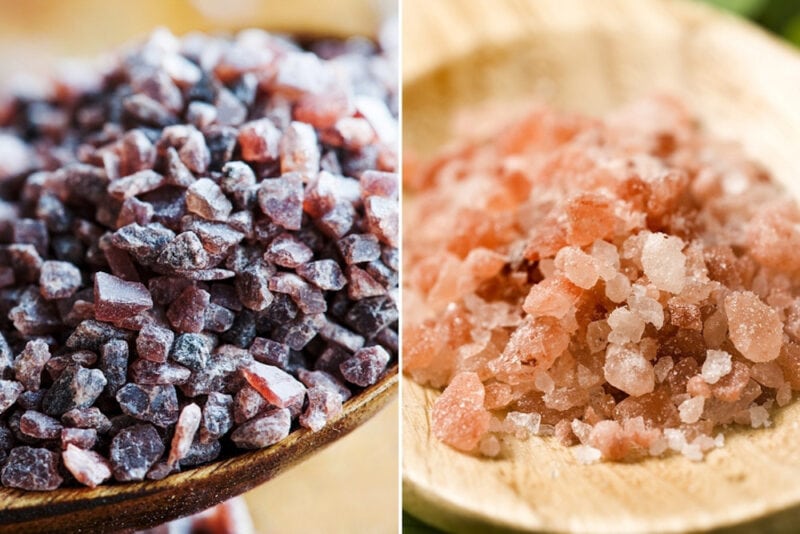
The first type of salt to come west from the Himalayas was a pink rock salt, commonly known as Himalayan pink salt.
This pink halite is the same salt that Himalayan black salt is made from. By adding spices and charcoal and firing pink salt for 24 hours, you obtain the chemical reaction that gives black salt its signature taste and color.
Both of these salts are lower in sodium than table salt and are high in minerals. But, due to the processing Himalayan black salt undergoes and the underlying chemical changes, it has a unique, eggy flavor unlike any other type of salt.
Types of Black Salt
There are a number of black salt products available. Most of them are very different in taste or function from Himalayan black salt.
Black Ritual Salt
Black ritual salt is less common than Himalayan but is easy to confuse if you don’t know the difference. This salt is made from a mix of salt, charcoal, and dyes and is used for non-cooking purposes. It is generally only available at curiosity stores and online.
Black Lava Salt
Black lava salt is a common find in Hawaii and Cyprus, two island chains with high volcanic activity. Historically, black lava salt was harvested from the coasts and was naturally tinted black from the lava rock sediment in the water.
Today, most of these products are manufactured using table salt and activated charcoal. Unlike Himalayan black salt, this type of dark halite tastes like table salt and is used as a visual finish for a variety of dishes.
Synthetic vs. Authentic Himalayan Black Salt
In addition to these different types of black salt, you also have to be wary of manufactured Himalayan black salt. Like fake lava salt, these products are made by synthetically mixing table salt with other ingredients, in this case, charcoal and sulfates.
It can be difficult to know if the bag of Himalayan black salt you are buying is authentic or synthetic. Only products using salt imported from India or Pakistan can contain true Himalayan salt. The bag should also describe the product as 100% natural and should list Himalayan black salt as the only ingredient.
Here are three of our favorite authentic Himalayan black salt products worth trying out:
- The Spice Lab India Black Kala Namak
- Naturevibe Botanicals Natural Himalayan Black Salt
- Raw Harvest Kala Namak
FAQ
What is Himalayan black salt good for?
Himalayan black salt is good for a number of applications. Health-wise, it has less sodium than most salts, is full of antioxidants, and has a high mineral content. It also has culinary applications thanks to its salty umami flavor.
Why does black salt taste like eggs?
The egg-like flavor in Himalayan black salt is due to its high sulfur content.
Is it OK to eat black salt every day?
Yes, it’s okay to eat Himalayan black salt every day. It has many medicinal applications and a variety of culinary uses. But, just like all types of salt, it should always be used in small amounts.
Uses For Black Salt
If you’ve ever mistaken Himalayan black salt for regular salt, you know firsthand that this halite doesn’t taste the same as others. In addition to being salty, it also has a savory umami taste and a distinct sulfury egg flavor.
This unique flavor lends itself well to use in vegan egg dishes. Tofu and other substitutes work well enough to emulate the texture of eggs, but they often lack the taste. Adding a dash of Himalayan black salt helps add that distinctive flavor back in. Try it on these eggy dishes:
Black salt also makes a great addition to many Indian and Middle Eastern dishes, like raitas and chaats. It can also be added to salads and fruit salads and makes a great spice for pickle brining.
If you are not familiar with eating Himalayan black sea salt, you may want to start with just a dash on savory dishes until you get used to the flavor and smell.
If you like these vegan culinary tips, don’t forget to sign up for our newsletter to get more just like this delivered to your inbox.
The Final Word on Himalayan Black Salt
Himalayan black salt makes a great addition to any diet. Not only does it have health benefits and medicinal applications, but it also tastes great on vegan egg dishes. Just be sure to purchase a quality, authentic option such as what The Spice Lab and Naturevibe Botanicals offer.
What is your favorite way to use Himalayan black salt? Let us know in the comments section below.
- How to Pick the Perfect Watermelon For a Sweet Summer Treat - April 10, 2024
- Future Kind’s Foundations: A Multivitamin Made for Vegans - December 5, 2023
- Does Nutritional Yeast Go Bad? - November 28, 2023

